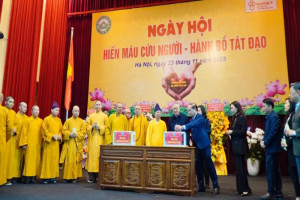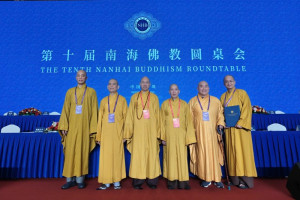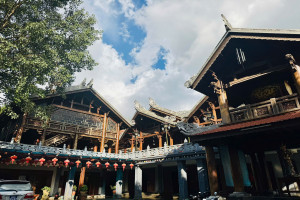
The Lam Kinh area in Tho Xuan district, Thanh Hoa, is a special national relic that has kept mysterious tales about the most flourishing feudal reign in Vietnam’s history.
Lam Kinh was originally Lam Son, the homeland of national hero Lê Lợi (1385-1433). He led the Lam Son uprising to fight the Chinese Ming invaders (1418-1428). Lê Lợi came to the throne in 1428 and was given the title Lê Thái Tổ, becoming the first king of the later Lê Dynasty. In 1430, Lê Thái Tổ renamed Lam Son as Lam Kinh (alias Tay Kinh) and built royal temples and tombs there. Kings of the Lê Dynasty (1428-1788) annually made a pilgrimage from Thang Long citadel to Lam Kinh to pay tribute to their ancestors.
Lam Kinh was built with “a mountain in the back and a river in the front”, which is regarded as a golden position in oriental geomancy. Lam Kinh has Dau mountain in the back to the north, Huong and Ham Rong mountains to the west, and Phu Lam forest to the east. It faces the Chu River to the south with Chua mountain as a screen. The site includes the southern gate, dragon royal court, central sanctum and royal ancestral temple.
Lam Kinh has the tombs of the kings of the Lê Dynasty, including Huu Lang - the tomb of King Lê Thái Tổ; Lang Khon Nguyen,- the tomb of Queen Ngô Thị Ngọc Dao, (mother of King Lê Thánh Tông); Chieu Lang- King Lê Thánh Tông; Du Lang- King Lê Hiến Tông; and Kinh Lang-King Lê Túc Tông. Each tomb has its own architecture and different flanking statues. Particularly, the tomb of Queen Ngô Thị Ngọc Dao is flanked by women statues.
Lam Kinh attracts local and foreign visitors not only for its original oriental architecture but mysterious legends about the tombs of the kings of the Lê Dynasty.
Vinh Lang, the tomb of King Lê Thái Tổ, was built on a flat area with Dau mountain at its back, two mountain ranges on the left and right, and Chua mountain as the screen.
At this tomb, there is a mysterious “laughing” guava tree. When visitors gently tickle the trunk, the whole tree would shake as if there were a strong wind blowing through it. It is also believed that visitors will feel relaxed and calm holding the tree branches while closing their eyes.
In the tomb area, there is also a 600-year-old ironwood tree, the tallest tree in Lam Kinh forest. The tree was said to shed all its leaves in 2010 after a project to reproduce Lam Kinh’s central sanctum was approved. The tree was believed to carry the mission of replicating the palace for future generations because its trunk and branches were enough to make a set of props for the building, including the main, sub and corner props. The diameter of the trunk at the root coincidentally had the same size of the main prop (0.8m) while that at the top has the exact size of the sub prop (0.6m).
Lam Kinh, where Lê Lợi, national hero Lê Lai and other kings of the Lê Dynasty are worshipped, is an original imperial temple of the Lê Dynasty and the historic location of the Tay Son uprising. It was recognized as a national historical relic in 1962 and a special national relic in 2013./.
Source: vietnam.vnanet.vn




